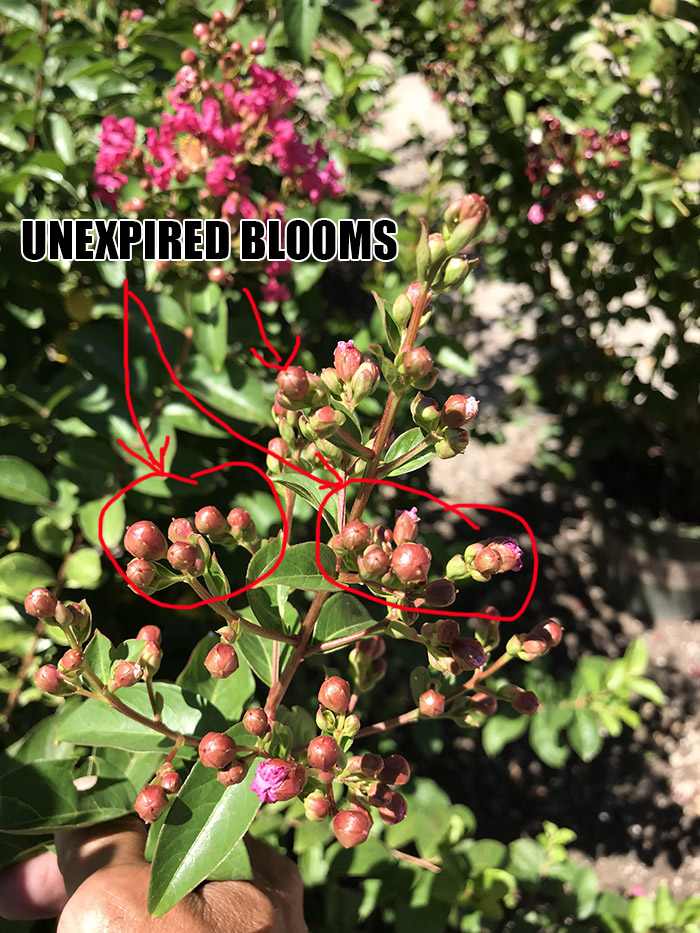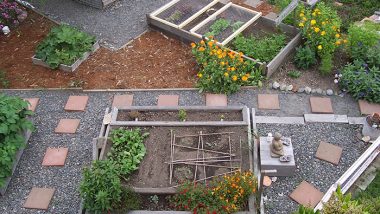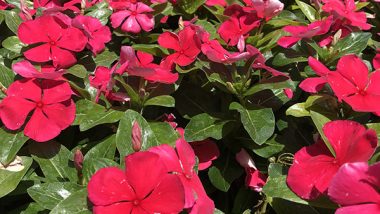Last updated on December 24th, 2024 at 07:32 am
One question I get all the time is… ” How to increase flowering in plants ?” Especially during the hot summer season when flowering plants rarely bloom. It is a big problem when the temperatures can reach 110° Fahrenheit in the lower elevations of the Southwest.
However, here are some gardening tips that will help maintain those blooms longer and more often.
How to increase flowering in plants
As most gardeners in the southwest know, the soil is poor and lacks the nitrogen and other elements needed for plants to grow and thrive.
Rainfall is also less frequent but there are some things you can do to help your plants flower and thrive. Here are some tips to help make your flowers bloom longer and more often.
There are many factors involved in trying to keep flowers on roses, bougainvilleas, crape myrtles, and native and non-native plants.
Water often
The number one tip is to water often (except for cactus and succulents). It is essential to water often during the hot summer months. Yeah, I know there are water restrictions in most Southwest cities. One way to please city codes is to install a drip system!
Once installed it is relatively easy to set the time more often in summer and less during cooler months. Set your timer to water in the early hours of the morning. Check your drippers often and make sure they are placed next to the root system. Are they working properly? Pull them out and turn on your timer manually, then check each dripper…one by one.
Make sure all your potted and in-ground plants drain well. Use mulch or bark and place it on top of your soil to help plants keep moisture in.
15-20 minutes every other day on established plants and trees will work. More often on new non-native plants.
Water newly planted plants, trees, and shrubs daily during the months of June, July, and August. The exceptions are Cactus, Agave, and succulents.
Too much water can also deplete the nutrients in the soil and the one ingredient needed for flower development is phosphorous.
Fertilize often for best results
How much? Many gardening experts recommend at least once in spring, summer, and fall. But in the southwest, it should be done once per month starting in early spring and ending in late October.
There are some gardening experts who think too much fertilizer is not good. This is true, but not in the Southwest where the rainfall is low, and the soil is poor and alkaline.
For even better results fertilize twice per month! It is important to note that it’s best to water first and then fertilize your plants…always.
Many Good fertilizers will have an analysis of 20-20-20 mix and this mix is a good all-around fertilizer. Grow More’s all-purpose fertilizer will work wonders so will Miracle-Gro.

Apply phosphorus to the soil.
What is phosphorus? It is a naturally occurring element in the soil but in and around the Southwest it is usually lacking this one element.
On a bag of fertilizer, it is the second number and is referred to by the symbol “P”.
Plants need phosphate to stimulate healthy root development for flowering and also helps in the prevention of disease and stress. The phosphate process combines phosphate rock with sulfur and produces a phosphoric solution. Phosphate helps in the root stimulation and flowering of plants.
There is also Nitrogen and Potash. You can read more about these elements here. What is Fertilizer?
Most local nurseries will carry phosphate products including our stores Color Your World and Guzman’s Greenhouse in Las Cruces, NM.
It is commonly called a bloom booster. There are many phosphate products online or at your local nursery and one of the best to use is Carl Pool’s BR61. The analysis is 9-58-8. You can also purchase straight-up phosphorus and super phosphorus.
Go Organic and use Bone Meal
Yes, bone meal works great as an organic flowering fertilizer. It comes from dried-up animal bones. It is what the name suggests crushed upped bones from animals specifically cows. You can use it for trees, and flowering plants, and helps your root system grow and flourish. It is a slow-release organic fertilizer. The analysis of bone meal is normally 0-15-0.
Dead-Head expired blooms often
Dead-heading and Pruning off expired blooms will help generate new blooms on almost all plants. Geraniums and roses respond well to deadheading. Crape Myrtles and the Vitex tree produce pods once the bloom expires. Prune them and they will regenerate new growth and bloom again in about 2-3 weeks after pruning. If possible do this throughout the growing seasons for better blooming results.
I know it is a lot of work but well worth it when you see your flowers blooming again!
Crape Myrtles and Vitex trees also love to have their expired blooms pruned off. Do this several times during the spring and summer season for long-lasting blooms. (Click Image for Larger Photo)



You can also hire an expert to help you do the pruning. Click here for the best landscapers in your area.
Plants that bloom all summer long
There are many plants that will bloom all summer long throughout the Southwest. Here is a list of these plants.
- Lantanas – Flowers all summer long no deadheading.
- Russian Sage – Blooms from early summer mid-fall.
- Yellow Yarrow plants and Pictures – Yarrow will bloom almost all summer long, trim off faded blooms.
- Wave Petunias – Water daily for blooms all summer. No deadheading.
- Flowering Vinca – Water daily for blooms all summer long. No need to prune expired blooms.
- Catmint – Keep moist for nice-looking blue flowers.
- Bougainvillea – Prune stems occasionally for long-lasting flowers throughout summer.
- Milkweed – Attracts butterflies. Blooms late spring until late-August
Here are some great Southwest front yard landscaping ideas.

Greenhouse Manager, Master Gardener, and Webmaster.
If you have any questions or enjoyed this post, feel free to share your thoughts in the comments below.




